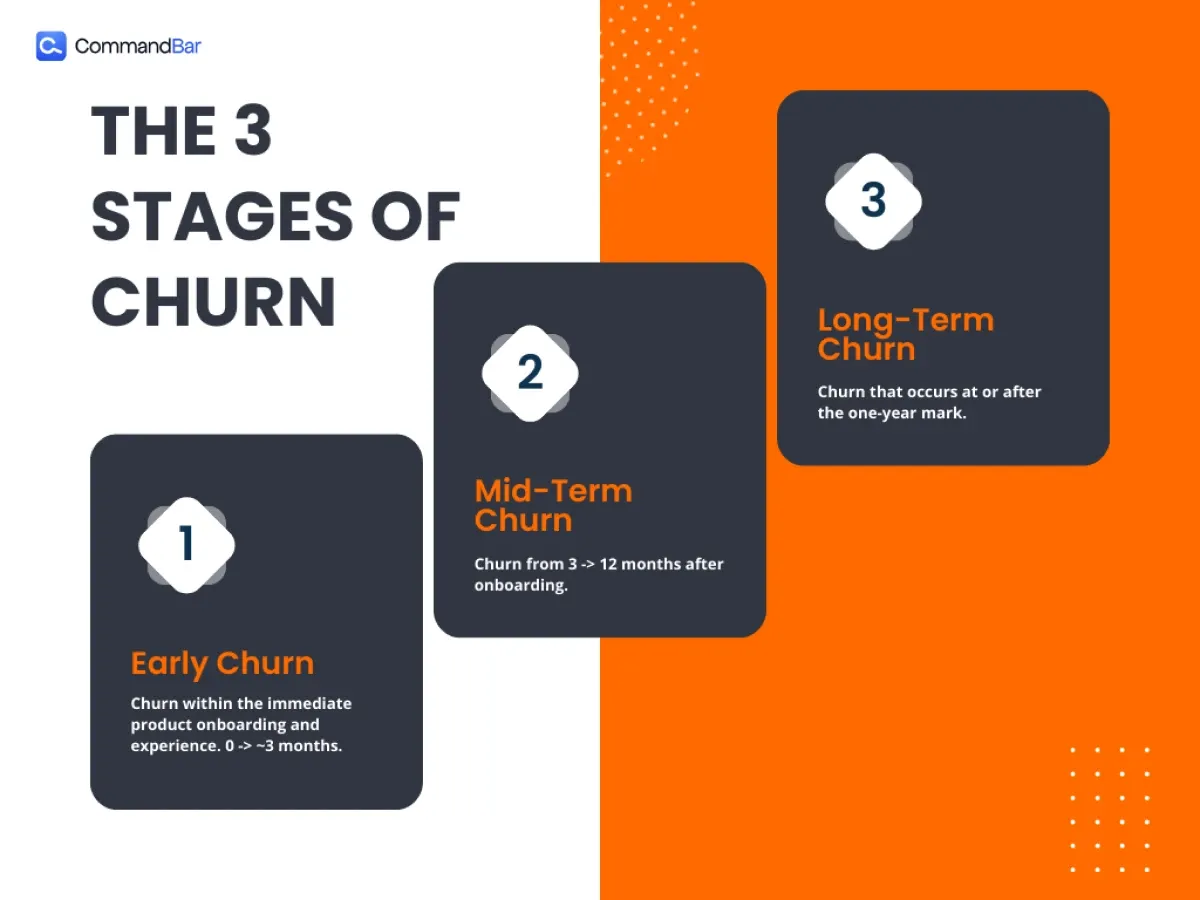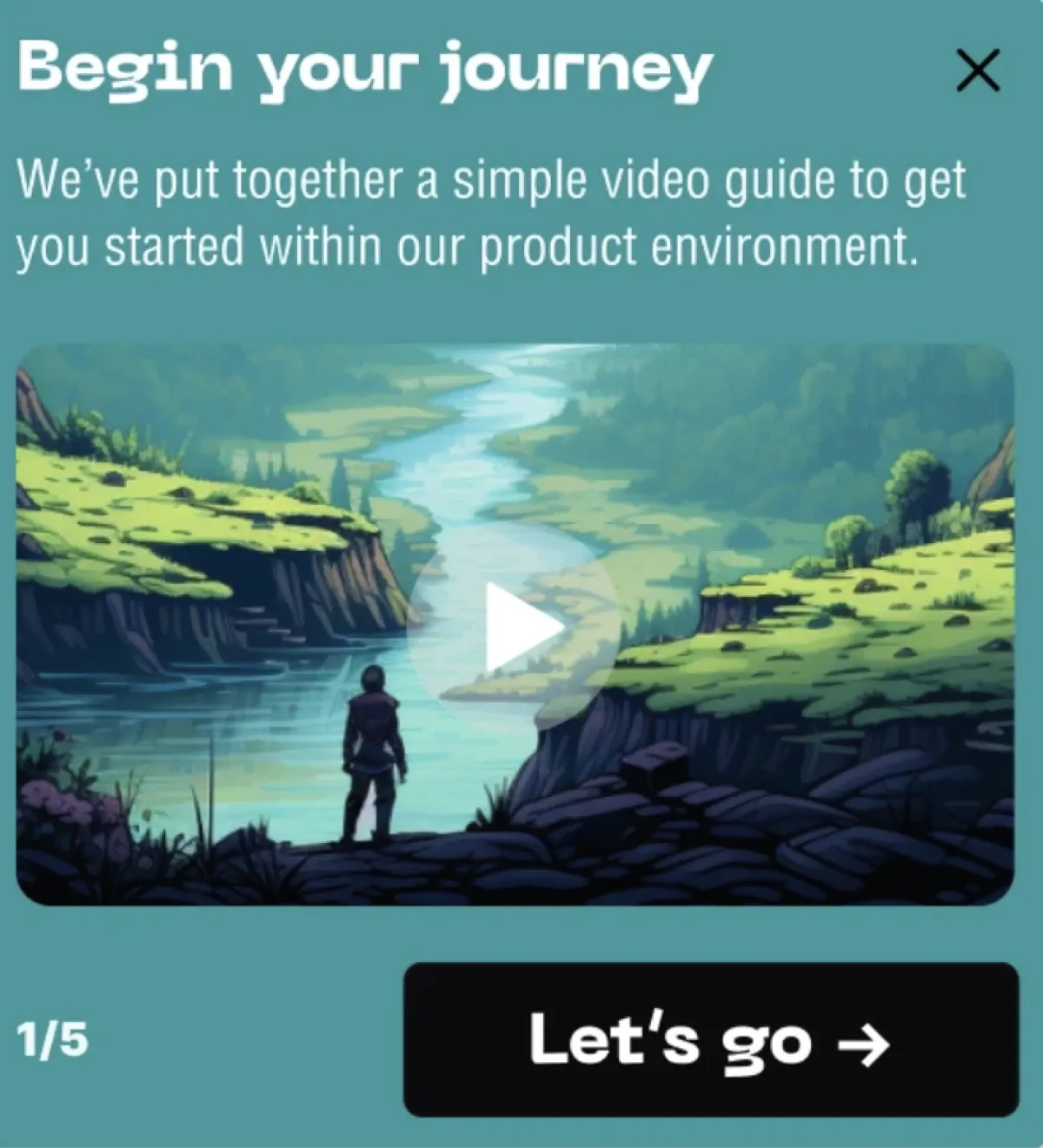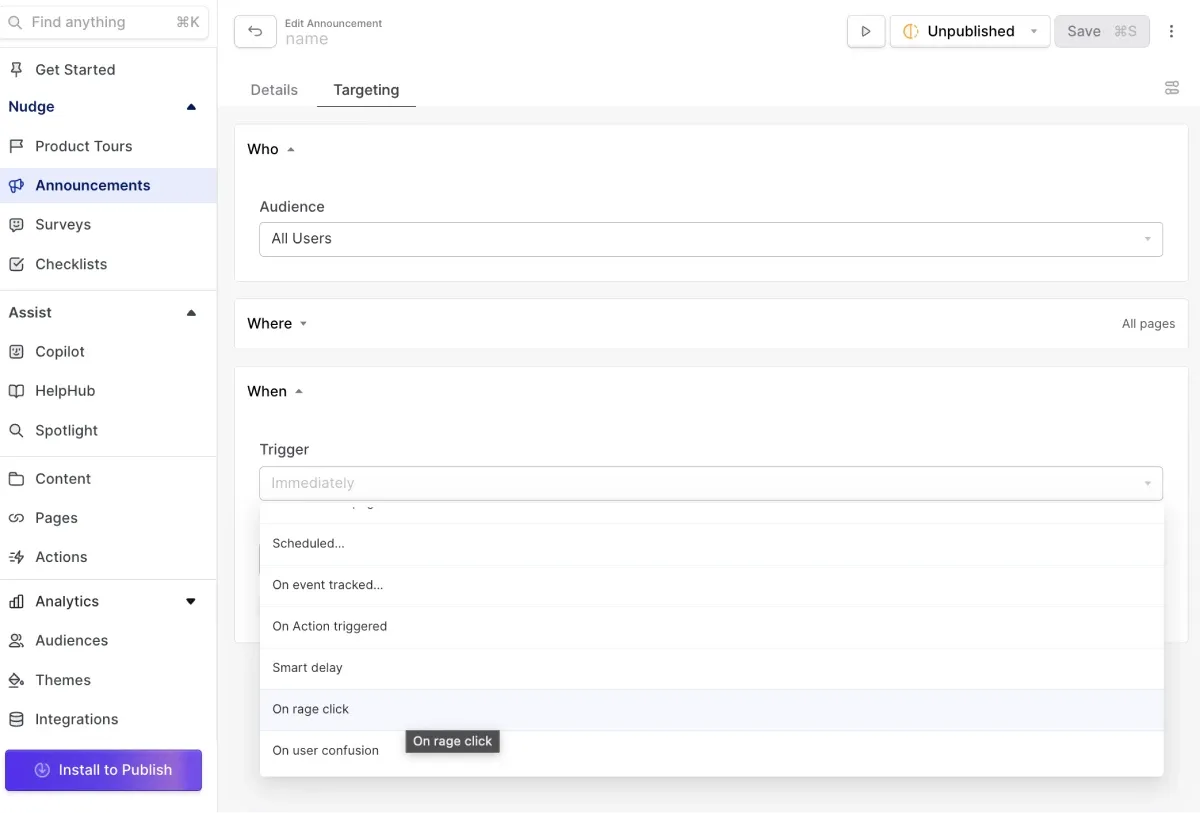The dreaded churn. Everyone hates it. Everyone obsesses over it.
Your team stays up late at EOQ, trying to retain customers and avoid it.
Churn in SaaS often brings to mind these pivotal moments at the end of the year or a quarter, at a moment of active “decision” on retention or churn.
Rightly so — they’re important.
Of course, you're also likely monitoring churn throughout your entire funnel and product. Those matter too, and more so than you think.
Why?
I believe one of the most underestimated “silent killers” for SaaS products is early churn and abandonment.
Early churn indicates failures in product onboarding, delivering an "aha" moment and poor time-to-value, and aligning your marketing with actual product performance.
These are crucial areas that you must excel in to be successful as a SaaS company.
But when you over-optimize your churn reduction strategies for those end of quarter, end of your moments, you risk missing this early churn phenomena.
You might chalk it up to “bad fit” or a “poorly sold deal.”
But that's not right. There's a lot you can do to reduce early churn using simple but powerful techniques within your product.
The stages of churn
First let's talk through the three main stages of churn.

Early churn
Early churn is focused on churn within the immediate product onboarding and experience. This can very depending on the complexity of your product.
Mid-term churn
Mid-term churn happens a couple of months to a year out from onboarding, and it usually involves your users hitting a plateau in the benefits that they're receiving from your product.
Perhaps you've been able to get folks set up and onboarded and using the product, but as they’ve used the product, you’ve failed to meet all of their needs (even if they have used it enough for a specific need.)
Or, perhaps they've begun to use other products to accomplish those needs, or alternatively, as they've gotten more into your product and been more expansive in their use, you failed to scale them or to meet parity with some of the other products in the market, and they've decided to go elsewhere.
Long-term churn
Long-term churn occurs at the one-year or later renewal mark. Folks may not need your tool anymore, or may have been disappointed by its lackluster performance.
It's also possible that they simply re-evaluated their options, had their budgets slashed, or otherwise are no longer able to commit to using your product.
How do you “pick” your churn stage timeframes?
There's no strict definition for early churn. It can range from a couple of days to the first few months, depending on the lifecycle of your product.
To set “churn stages,” you can identify the initial setup, onboarding, and activation period for your product. For instance, if most users are fully activated within two weeks, any early churn might indicate a failure to convert users in that timeframe.
Alternatively, for a large enterprise product with a three-month onboarding period, early churn might be seen as a failure to renew the contract after the first year, as most customers stay for multiple years.
No matter the specific timeframe, early churn is highly problematic as it highlights core issues with your product.
Measuring and analyzing churn
It's important to understand how you're going to define and measure your churn behavior so you have a consistent baseline to compare against.
Let's say that you've determined that your churn stages
- Early churn: 0 → 1 month
- Mid-term: 1 → 12 months
- Long-term: 1 year and up.
This lets you place your churn stages within your overall product funnel and customer journey map.
Now, you have a clear and consistent structure for your churn map.
The next step is to qualify exactly what churn “is.”
Is it only a fully canceled contract?
If you have a free version of your product, is it someone who's deleted their account or someone who's just been inactive for a certain amount of time?
It's important to define exactly what churn means so that you can then measure it correctly within each stage.
Your criteria and characterizations need to be consistent and need to make sure that they line up with how your other teams are measuring their statistics.
Why does early churn happen?
Now we know what early churn is and how to define it.
But what actually causes it?
Poor onboarding, unmet and misleading expectations, product and feature problems, and insufficient support can lead to early customer frustration and churn.
These issues can lead to significant problems down the road. Even if some users don’t churn early, they're probably not getting the best experience, which can affect your overall churn numbers and product performance down the line.
Let's walk through some of these issues in more detail.
Bad onboarding
It doesn't take much to lose a user forever if your onboarding sucks.
Whether it's because you have too many questions in your onboarding form, it's generally confusing, or something is actually broken in the onboarding itself, you may never convert that initially onboarding user into an onboarded and activated customer if you fail here.
This is unbelievably damaging to your long-term success as you failed to even get folks into the product.
It doesn't matter if you have the most amazing product post onboarding if you can’t actually get folks through the flow.
Slow TTV
It's important to get folks into the product, executing tasks, feeling good as soon as possible. We call these quick wins, aha moments, wow moments, and more, but generally what we're talking about is the time to value, or TTV.
The lower the better as it means that folks are getting clear benefits and dopamine hits from your product.
If you can't demonstrate value quickly, you have a chance of losing them forever to churn because they simply won’t have that “Wow, this is cool, I like it, and I need it!” moment.
Expectation setting (and matching)
One of my least favorite and most frustrating new product experiences is when my expectations from the marketing and sales messaging I've received do not line up with the actual product experience.
There's ongoing memes about how sales always over promises and the product under delivers, but unfortunately this is too true sometimes, weather intentional or not.
You have to have both a strong product offering as well as consistent messaging to ensure that expectations are met or even better exceeded.
This boils down to having a clear line of communication from leadership to product to engineering to growth to sales and more — you have to have a clear vision and shared mentality towards product messaging.
Support and technical issues
When folks join your product, they have a lot to learn particularly if it's complex. If you don't have helpful support documentation and assistance available you risk losing folks out of frustration.
Strategies to reduce early churn
So how do you actually go about solving these above issues and reducing your early churn rate in your overall product performance?
Optimizing onboarding
First of all, those first touch points in that onboarding sequence need to be super clean and clear.
We’ve written about this extensively elsewhere, but essentially, you want to onboard folks and get the maximum amount of information and clarity and create their usual persona and profile with the least amount of questions as possible.
It's not about being super expansive and giving them the most involved onboarding.
Rather, it's about getting 80% of the info in as little time as possible.
It's really key that your onboarding is tailored and smooth and doesn't just collect information, but rather creates a customized experience with that info as well.
We'll talk more about that later!
Designing quick wins
Then once they're in the product, it's important that they have access to really clear and immediate wins.
Let’s say that you're a task management software and you help folks organize everything that they need to do.
It might be helpful to have as part of their onboarding and activation sequence, a three-step product tour that walks them through how to create their first task and assign it to someone on their team.
This way, they can go and build that in the first 3 minutes in product.
Even that tiny hit of dopamine from that quick win can be helpful in creating a positive reaction and brand affinity for that user.
Getting folks to quick wins and aha moments quickly is super key as it demonstrates value, reinforces an early positive impression, and creates a feedback loop of success within the product.
Support solvers
Things won't always go right in prouct, and that's OK. That's why it's super important that you have great support.
It doesn't just mean having agents who are available and knowledgeable, but also having a lot of self-serve resources, an AI assistant, and really thorough and well-thought-out help documentation to help you battle the support crisis that so many folks deal with.
I also think generally, it's really important that you have a mindset of a customized and personalized customer experience.
This is not a one-size-fits-all journey.
No product is.
No user is.
And there are a lot of ways today with AI technology that you can make the actual customer experience super nuanced and tailored to what that specific user needs at that specific time.
Let's talk more about that now!
Personalizing onboarding and PX for reduced early churn
One of the best ways to avoid early churn is by having a really personalized onboarding and initial product experience.
We talked about that at a high level earlier, but let's discuss what that actually means in practice.
One of the things we've seen work successfully for a lot of our customers is implementing onboarding flows and initial product experiences that are very tailored and nuanced.
The way to do this in Command Bar is twofold.
First, your in-app messaging is hyper-targeted and focused on the specific user.
This requires a great understanding of the different personas within your product so you can sort people into cohorts based on their onboarding answers + proper segmentation and tracking.
Second, by deploying an AI agent like our Copilot as a user assistant, you can allow them to get quick answers and guidance without needing to reach out to support.
How in-app messaging can help
One thing we've seen work really well to help stop early churn for CommandBar customers is turning in-app messaging that's very broad, generic, and un-targeted into filtered, targeted, and nuanced messaging that is built off of smart actions and triggers within the product.
So let's say you've designed a very simple and smooth onboarding form that is not overly onerous. This user joins and fills out some information and you slot them into a user Persona that you've built.
You know the car workflow that these these kind of users usually want to execute within your product, so you create a visually appealing product tour that allows users to go step by step through your product.

Then, 30 minutes later you have a scheduled nudge that suggests that they check out a secondary feature that relates to this core feature.
You can also go beyond these pre-scripted interactions.
For example, you could identify users performing a “rage click” around the screen and serve them up with an offer for help.


All of this is designed to make the product experience very intuitive and proactively helpful by curating the experience to the users specific needs.
Personalization through Copilot
Another big way to reduce your early churn and increase the personalized assistance your users can receive is by using an AI agent, like our Copilot.
Copilot is not just a catch-all for basic support queries. Rather, it's your users first and foremost tool for asking any questions and solving any problem they have.
Don't get me wrong, we've seen copilot used as a fairly generic help bot.
But our best in-class customers have tailored their UX based on user personas AND created deep and accurate and up-to-date help documentation that powers Copilot. This enables it to provide instant support, resulting in higher engagement and satisfaction during the critical first month.
Then, they've integrated their nudges and in-app see that but weird stuff messaging with Copilot directly.
We’ve seen Copilot not only deflect a huge number of tickets, but actually INCREASE engagement with nudges and product tours because it can in fact launch them directly after a specific query.
Now we have customers training Copilot to specifically launch into these experiences after it perceives a query that needs them.
This approach not only helped users feel more supported but also allowed them to realize the value of the product much faster, reducing the likelihood of early churn.
Real in-product experience > a chat explanation.
Conclusion
Reducing churn across your entire product matters, but fixing early churn can be perhaps the most impactful because it boosts long-term retention potential and improved initial experience. By creating a personalized, clean, and intuitive onboarding and initial product experience, you're setting yourself up for success, however it's key to continue to provide high level support, consistently Innovative new features, and invest in relationship building on top of pure product improvements.













